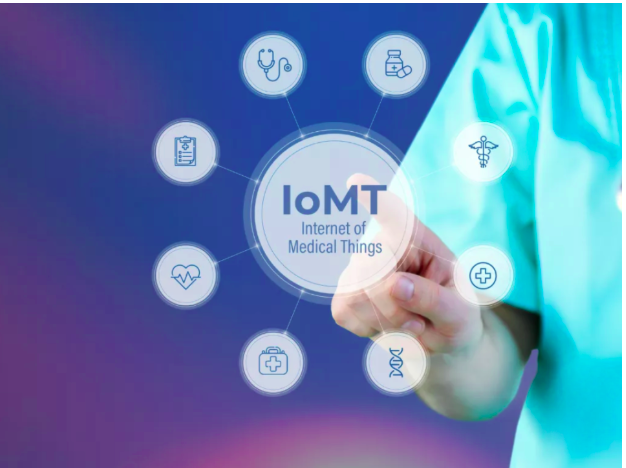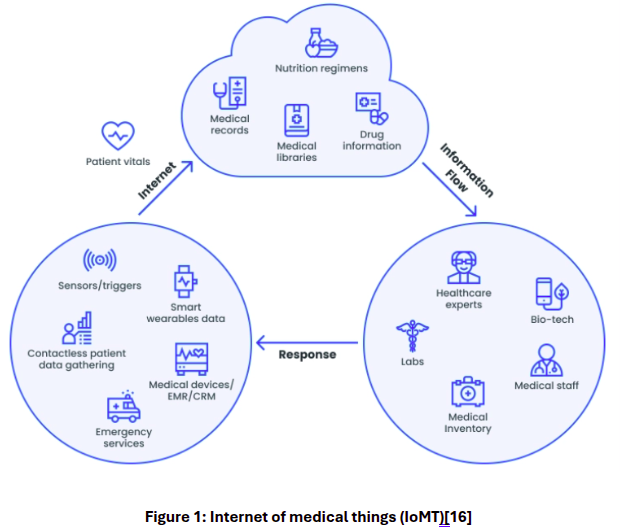
Securing the Internet of Medical Things (IoMT): A Critical Priority
The rapid advancement of the Internet of Medical Things (IoMT) is transforming the healthcare industry. IoMT devices, such as smart wearables, remote monitoring systems, and implantable devices, are improving patient outcomes and reducing healthcare costs. However, as these devices become more interconnected, they also introduce significant cybersecurity risks. Ensuring the security of IoMT has become a critical priority as the consequences of breaches could lead to compromised patient safety, data privacy violations, and severe financial losses.
The Importance of Security in IoMT
IoMT devices are designed to collect, transmit, and analyze sensitive patient data. This continuous flow of data is essential for accurate diagnoses, real-time monitoring, and personalized treatment plans. For example, a smart insulin pump can automatically adjust insulin levels based on real-time glucose measurements. However, if such devices are compromised, cybercriminals could tamper with the device's settings, potentially endangering patients' lives[1][2].
Given that healthcare data is one of the most valuable and sought-after commodities on the black market, protecting IoMT devices has become a top priority for healthcare organizations. A single data breach can expose sensitive patient information, leading to identity theft, insurance fraud, or even the manipulation of patients' medical records[3].

Key Security Challenges in IoMT
Despite the critical importance of IoMT security, several challenges make it difficult to protect these devices effectively:
-
Device Vulnerabilities: Many IoMT devices are developed with a focus on functionality rather than security. These devices often have limited processing power, making it difficult to implement robust encryption and other security measures[4][5].
-
Data Privacy Concerns: IoMT devices collect vast amounts of sensitive information, such as health metrics, medical histories, and biometric data. Protecting this data from unauthorized access is essential to maintaining patient privacy and complying with regulations like General Data Protection Regulation (GDPR) and Health Insurance Portability and Accountability Act (HIPAA) [6].
-
Lack of Standardization: The IoMT ecosystem comprises devices from various manufacturers, each with its own protocols and standards. This lack of standardization can result in interoperability issues and security gaps that attackers can exploit[7].
-
Weak Authentication and Access Control: Many IoMT devices rely on default passwords or weak authentication mechanisms, making them easy targets for hackers. Once a device is compromised, it can serve as an entry point to the entire network, putting other connected systems at risk[8].
Strategies for Enhancing IoMT Security
To address the security challenges in IoMT, healthcare organizations and device manufacturers can implement several strategies:
-
Adopting Secure Device Design: Manufacturers should incorporate security into the design of IoMT devices from the outset. This includes implementing strong encryption, secure boot processes, and firmware updates that address newly discovered vulnerabilities[9][10].
-
Implementing Network Segmentation: Healthcare facilities can protect sensitive IoMT data by segmenting their networks. By isolating IoMT devices from other critical systems, organizations can reduce the risk of lateral movement during a cyberattack[11].
-
Utilizing AI and Machine Learning: AI-based intrusion detection systems can monitor IoMT devices for unusual activity, enabling early detection of potential threats. Machine learning algorithms can analyze patterns in device behavior to identify and block malicious activity before it leads to a breach[12].
-
Regular Security Audits and Penetration Testing: Regular audits and penetration testing can help identify vulnerabilities in IoMT systems before attackers exploit them. Organizations should also ensure that their devices and systems comply with industry standards and regulations[13].
-
Privacy-Preserving Techniques: Techniques such as data anonymization and differential privacy can protect patient data while still allowing healthcare providers to leverage valuable insights. These techniques ensure that sensitive information remains secure even if data is intercepted during transmission[14].
Future Directions in IoMT Security
As IoMT continues to evolve, so will the tactics and techniques used by cybercriminals. The future of IoMT security will likely involve the integration of advanced technologies such as blockchain for secure data sharing, quantum encryption to protect against sophisticated attacks, and zero-trust architectures that continuously verify the identity of devices and users[14][15].
Moreover, healthcare organizations should invest in training their staff on best practices for cybersecurity, as human error remains one of the most common causes of data breaches. By adopting a holistic approach to IoMT security, healthcare providers can protect their patients while continuing to benefit from the latest technological advancements.
References:
-
Adelusi, Joshua. (2024). Cybersecurity Challenges in the Internet of Medical Things (IoMT).
-
https://www.linkedin.com/pulse/iomt-security-vulnerabilities-brian-ahern-e751e/
-
ARMIS 2024 “SOLUTION BRIEF: Network Segmentation for Healthcare”
-
Binariks 2023. “Understanding IoMT Security: A Comprehensive Guide”
Edited By: Windhya Rankothge, PhD, Canadian Institute for Cybersecurity
Related Blogs: The Role of Artificial Intelligence in Modern Cyber Defence: Friend or Foe? , ”We”llness not ”I”llness: Cyber Security is a Shared Responsibility